There’s something profoundly primal about encountering Africa’s Big Five on safari. It’s a blend of awe, reverence, and excitement that transcends the ordinary. The Big Five—lion, leopard, elephant, buffalo, and rhinoceros—are more than just the stars of the African wilderness; they are emblematic of the continent’s raw, untamed beauty. Each encounter with these magnificent creatures feels like stepping into a world where nature still rules supreme, offering a glimpse into a time when the earth was wilder, and our connection to it was stronger. In this post, we’ll take you on an unforgettable journey through Africa’s premier safari destinations, where the Big Five roam free, and adventure awaits around every corner.
The Legend of the Big Five: More Than Just a Safari Checklist
The term “Big Five” originally referred to the five most dangerous animals to hunt on foot, but today it symbolizes the ultimate wildlife experience on the African continent. While trophy hunting is thankfully a relic of the past in many regions, the Big Five continue to capture the imagination of wildlife enthusiasts and photographers alike. Spotting these animals is often the highlight of any safari, a rite of passage for those who seek to understand Africa’s majestic wildlife.
But a Big Five safari is about more than just ticking animals off a list. It’s about immersing yourself in Africa’s diverse ecosystems, from the sprawling savannas to dense forests, each offering unique encounters and unforgettable moments. It’s about the thrill of the chase, the quiet moments of observation, and the stories that unfold in the wild—stories of survival, power, and the delicate balance of nature.
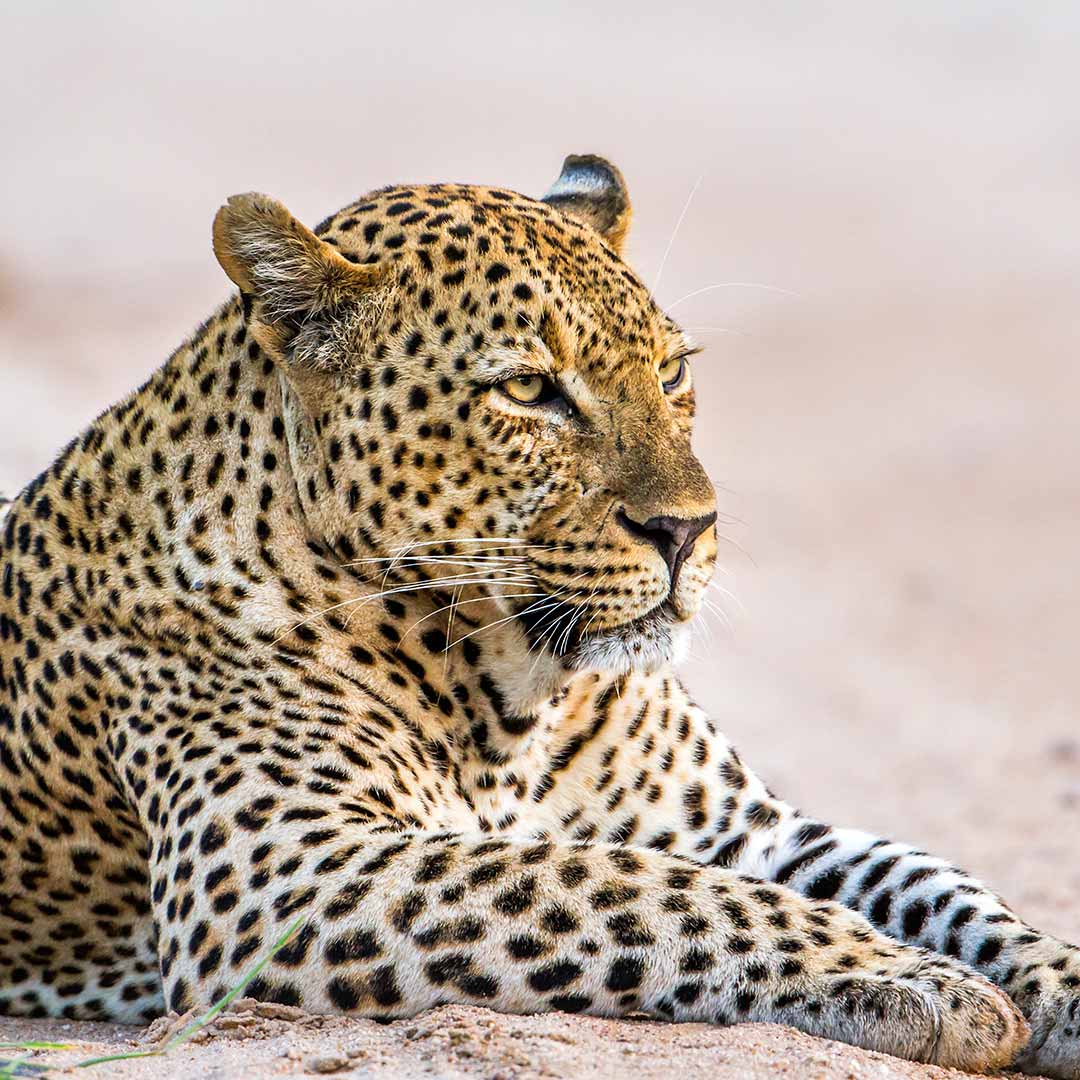
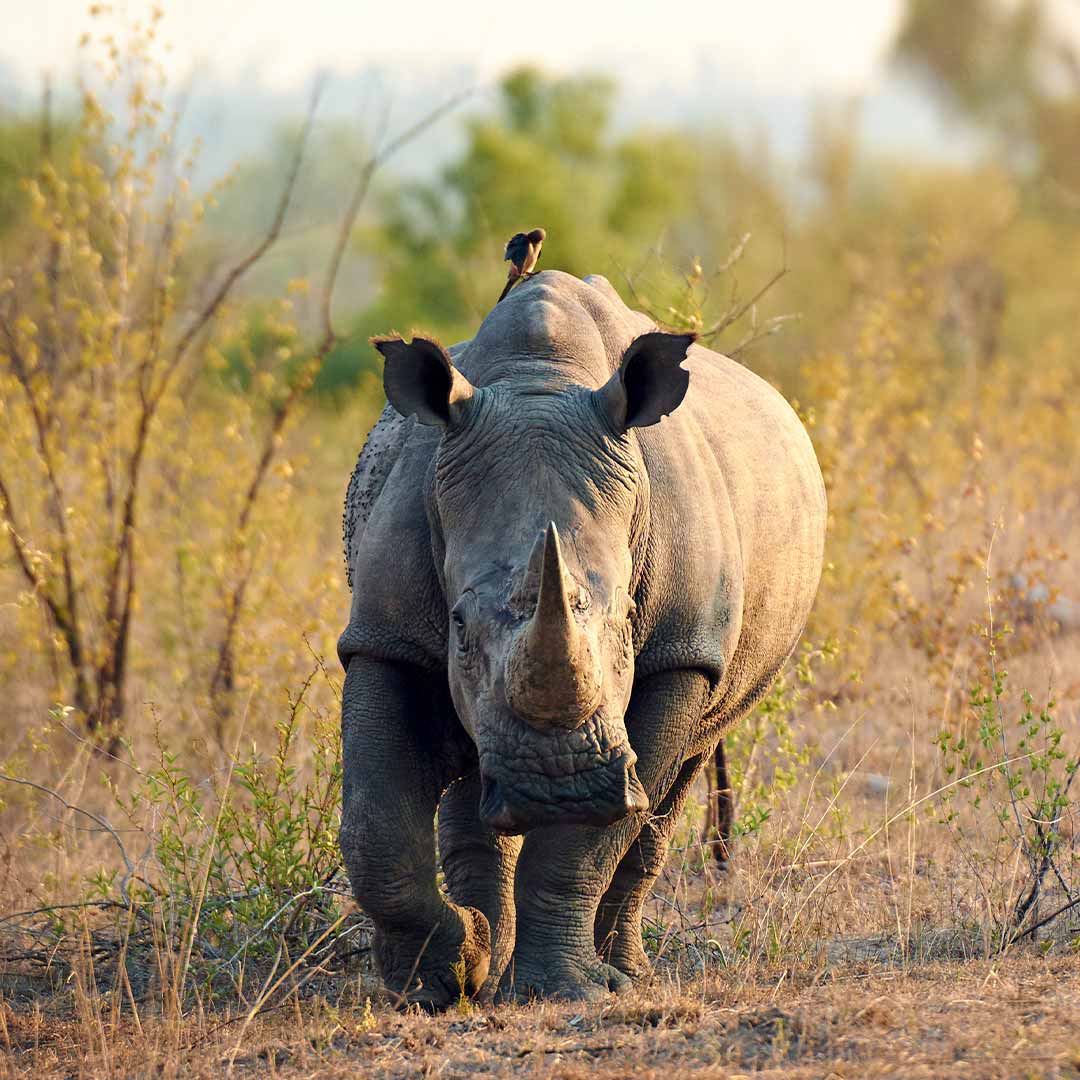
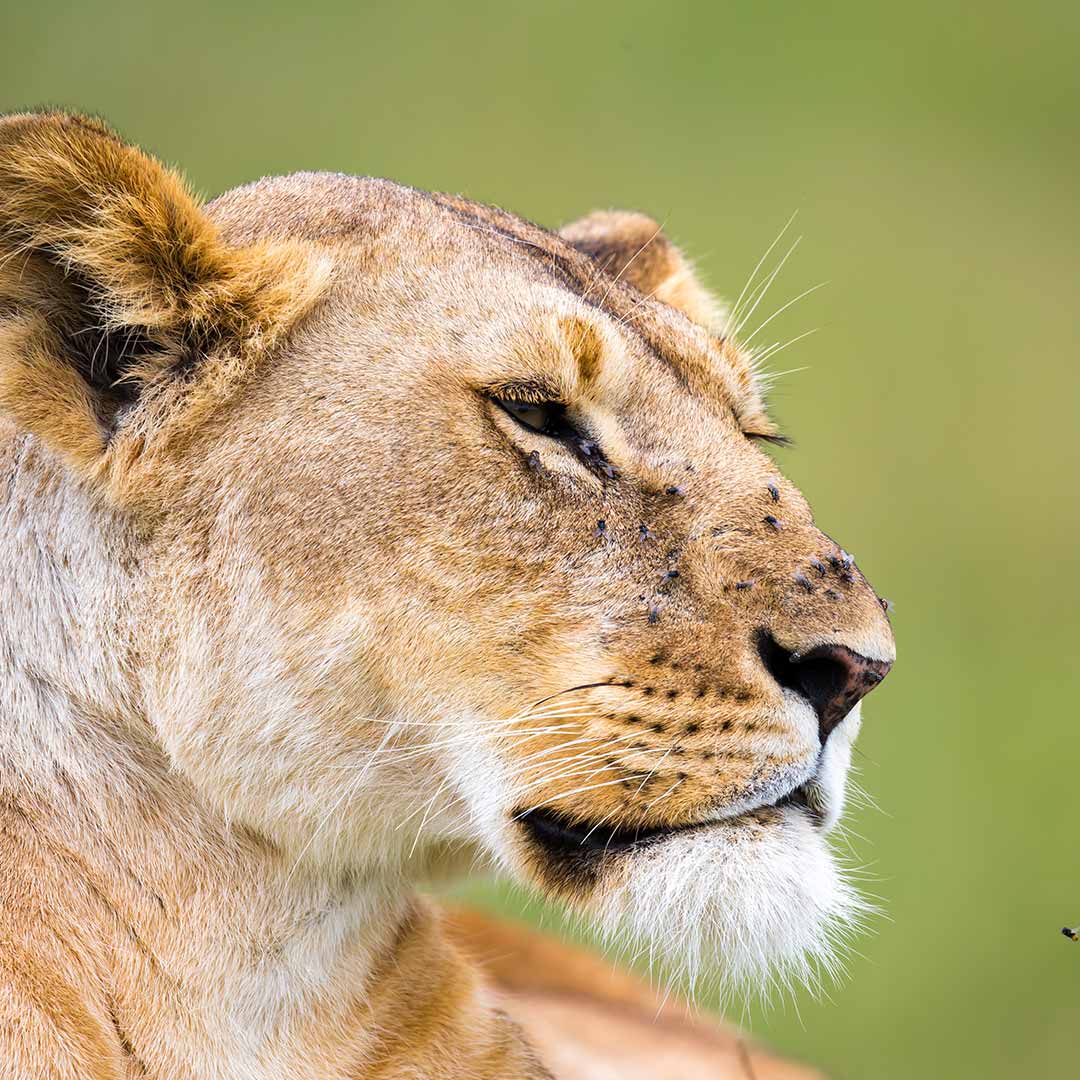
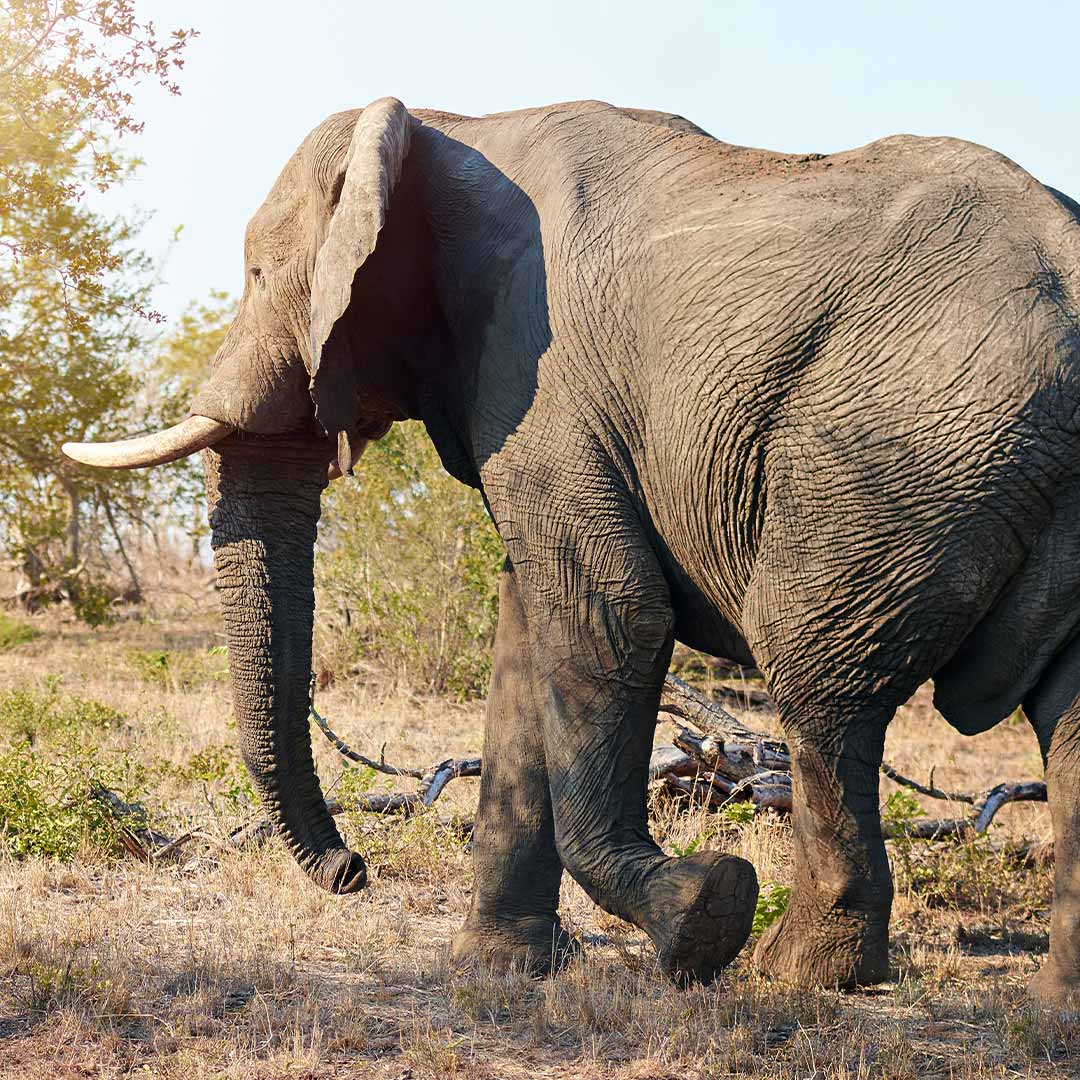
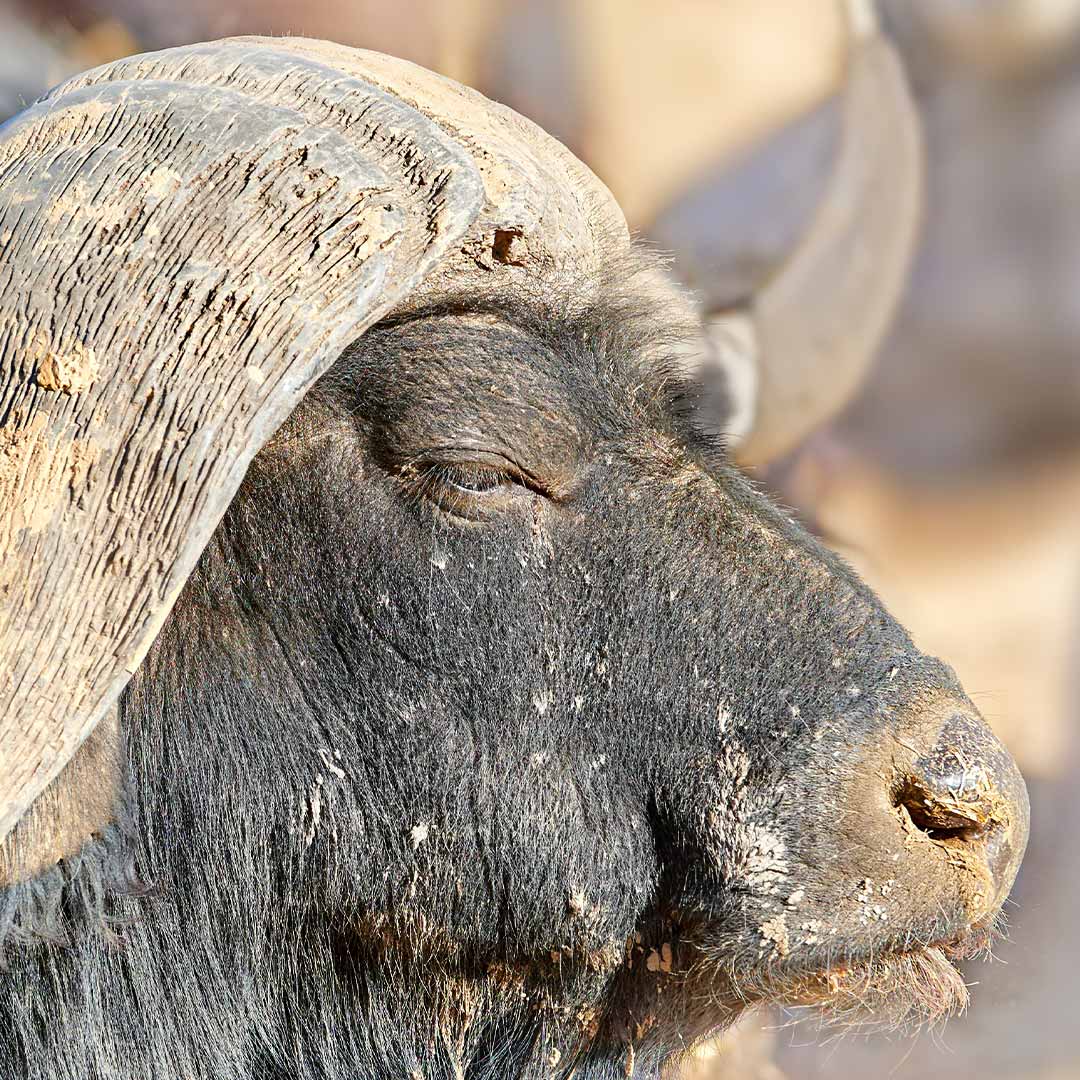
The Serengeti National Park, Tanzania: Where the Circle of Life Plays Out
If ever there was a place where the drama of the African wilderness is on full display, it’s the Serengeti. This vast ecosystem, stretching across northern Tanzania and into Kenya, is synonymous with the Great Migration, where millions of wildebeest, zebras, and gazelles embark on a perilous journey in search of greener pastures. But alongside these epic migrations, the Serengeti is also home to a thriving population of the Big Five.
About Serengeti National Park: The Serengeti is arguably one of the most iconic national parks in Africa, renowned for its seemingly endless plains that stretch as far as the eye can see. The park covers nearly 15,000 square kilometers, offering a diverse range of habitats from savannahs to riverine forests. The sheer scale of the Serengeti ensures a sense of solitude and immersion in the wild, where you can experience the rhythms of nature without the crowds. Beyond the Big Five, the park is home to over 500 species of birds and countless other mammals, making it a biodiversity hotspot. Whether you’re visiting during the calving season, the great river crossings, or the quieter months, the Serengeti never fails to deliver a breathtaking spectacle.
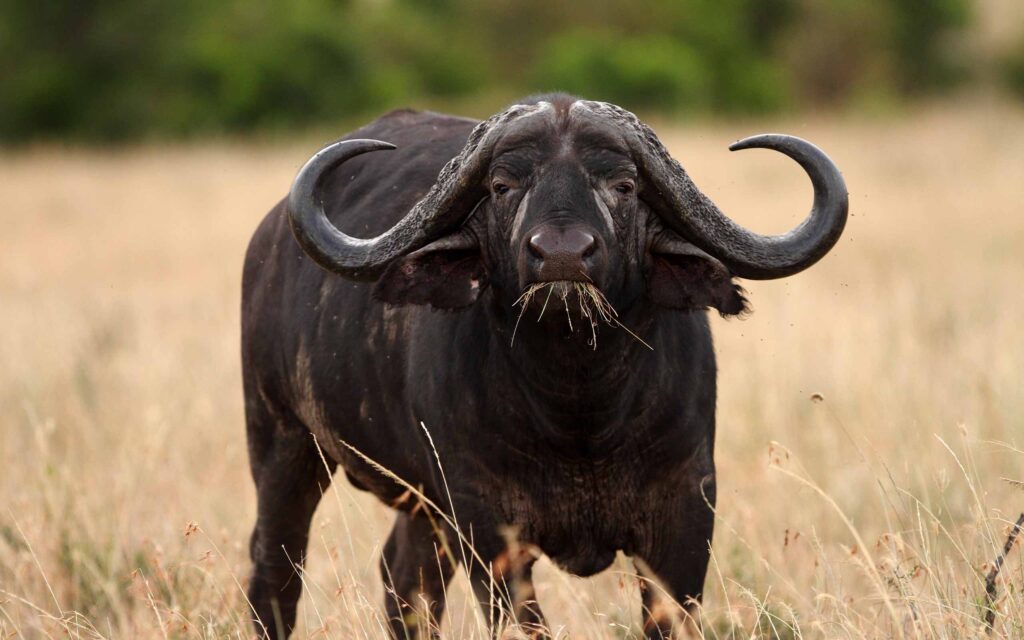
Lion: Known as the king of the Serengeti, lions are often spotted lounging in the sun, their golden manes blending with the tall savanna grass. If you’re lucky, you might witness a pride on the hunt—a breathtaking, albeit intense, display of teamwork and raw power. Lions are frequently seen in the Seronera Valley, where large prides hunt and rest.
Leopard: Elusive and solitary, leopards prefer the cover of trees, where they can stealthily observe their surroundings. The Serengeti is one of the best places to spot these elusive cats, especially in the rocky outcrops known as kopjes, where they often hide their prey. Leopards are best spotted around the Seronera River, especially during early morning or late afternoon game drives.
Elephant: The gentle giants of the Serengeti, elephants can be found wandering the plains in large herds. Watching a matriarch lead her family across the savanna, young calves playfully trailing behind, is a heartwarming sight that speaks to the deep bonds within elephant herds. African Elephants are often seen in the northern Serengeti, particularly in the Lobo and Mara regions.
Buffalo: Often considered the most dangerous of the Big Five, African buffaloes are unpredictable and fiercely protective of their young. They move in large herds, and their sheer numbers and size make them an imposing presence on the Serengeti plains. African Buffaloes roam in large herds across the central and western corridors.
Rhinoceros: While rhino sightings are rarer in the Serengeti due to poaching, efforts to protect these magnificent creatures are ongoing. The park is home to both black and white rhinos, and spotting one is a rare and special experience. Rhinos are rare, but the Moru Kopjes area is your best bet for a sighting.
Best Time to Visit
The dry season (June to October) is ideal for viewing the Big Five as animals gather around waterholes, and the vegetation is sparse, making them easier to spot. For the Great Migration, plan your visit between July and October.
Kruger National Park, South Africa: The Ultimate Big Five Safari Destination
Kruger National Park is South Africa’s crown jewel when it comes to Big Five safaris. Covering nearly 20,000 square kilometers, this iconic park offers some of the best wildlife viewing in Africa, with a well-developed infrastructure that caters to all kinds of travelers, from luxury seekers to budget-conscious adventurers.
About Kruger National Park: Kruger National Park is one of the largest and oldest game reserves in Africa, established in 1898 to protect the region’s diverse wildlife. Its vast landscape encompasses everything from dense forests to open plains, rivers, and mountains, providing a rich variety of habitats for the Big Five and countless other species. The park is also home to a number of significant archaeological sites, offering a glimpse into the history of the area’s early human inhabitants. With a network of well-maintained roads, Kruger is one of the few parks in Africa where you can embark on a self-drive safari, giving you the freedom to explore at your own pace. Whether you choose to stay in a luxury lodge or a basic campsite, the magic of Kruger is accessible to all.
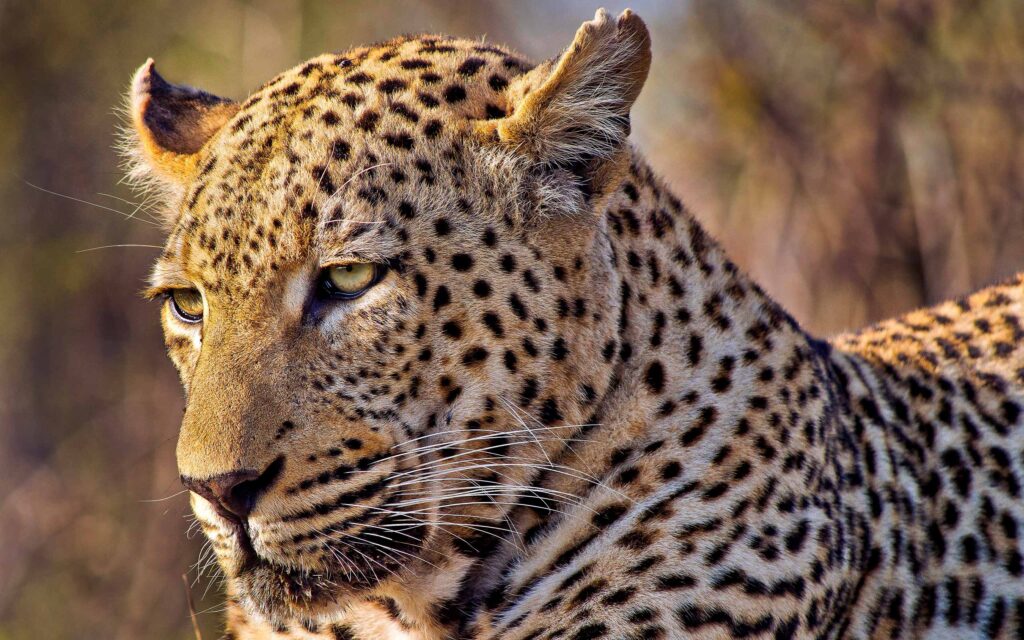
Lion: Kruger is famous for its large lion prides, often seen lazing on dirt roads or under the shade of acacia trees. The park’s lions are used to vehicles, allowing for incredible close-up encounters that will leave you breathless. Lions are commonly spotted in the central regions of Satara and Lower Sabie, where open grasslands make for prime hunting grounds.
Leopard: Leopards in Kruger are masters of disguise, often blending into the dappled light of the bushveld. Sabi Sands, a private reserve adjacent to Kruger, is renowned for its leopard sightings, offering some of the best chances to photograph these elusive cats. Leopards are often seen in Sabi Sands, a private reserve adjacent to Kruger, where these elusive cats are more accustomed to vehicles.
Elephant: With over 13,000 elephants, Kruger is one of the best places in Africa to observe these magnificent creatures. They can be seen around watering holes, crossing rivers, or stripping bark from trees with their powerful trunks. Elephants are frequently encountered in the northern regions of Kruger, particularly around the Shingwedzi and Mopani areas.
Buffalo: Kruger’s buffalo herds are massive, often numbering in the hundreds. Watching a herd of these formidable beasts move across the landscape, dust rising in their wake, is a sight that captures the untamed spirit of Africa. Buffaloes are abundant in the southern parts of the park, especially around Skukuza and Crocodile Bridge.
Rhinoceros: Kruger is one of the last strongholds of the rhinoceros in Africa. Despite the threat of poaching, both black and white rhinos continue to thrive here, thanks to stringent conservation efforts. A sighting of these prehistoric-looking animals is a reminder of nature’s ancient and fragile beauty. Rhinos can be seen in the southern sections of the park, especially around Pretoriuskop and the Sabi Sands area.
Best Time to Visit
The dry winter months (May to September) are the best for Big Five sightings as animals congregate around water sources, and the vegetation is less dense.
Masai Mara National Reserve, Kenya: A Big Five Experience Amidst the Migration
The Masai Mara, often simply referred to as “The Mara,” is the northern extension of Tanzania’s Serengeti and is equally famous for its abundance of wildlife. While the Great Migration is the main attraction, the Mara is also an excellent destination for spotting the Big Five.
About Masai Mara National Reserve: The Masai Mara National Reserve, named in honor of the Maasai people who inhabit the area, is one of Africa’s most celebrated wildlife reserves. Spanning 1,510 square kilometers, the Mara’s ecosystem is characterized by rolling grasslands, acacia forests, and the winding Mara River, famous for its dramatic crossings during the Great Migration. The reserve is not fenced, allowing the wildlife to roam freely between the Mara and the Serengeti. This creates a dynamic environment where the predator-prey interactions are intense and unpredictable. The Mara is also home to the Maasai community, and a visit here offers an opportunity to learn about their rich cultural heritage. The combination of prolific wildlife and vibrant culture makes the Masai Mara a quintessential African safari destination.
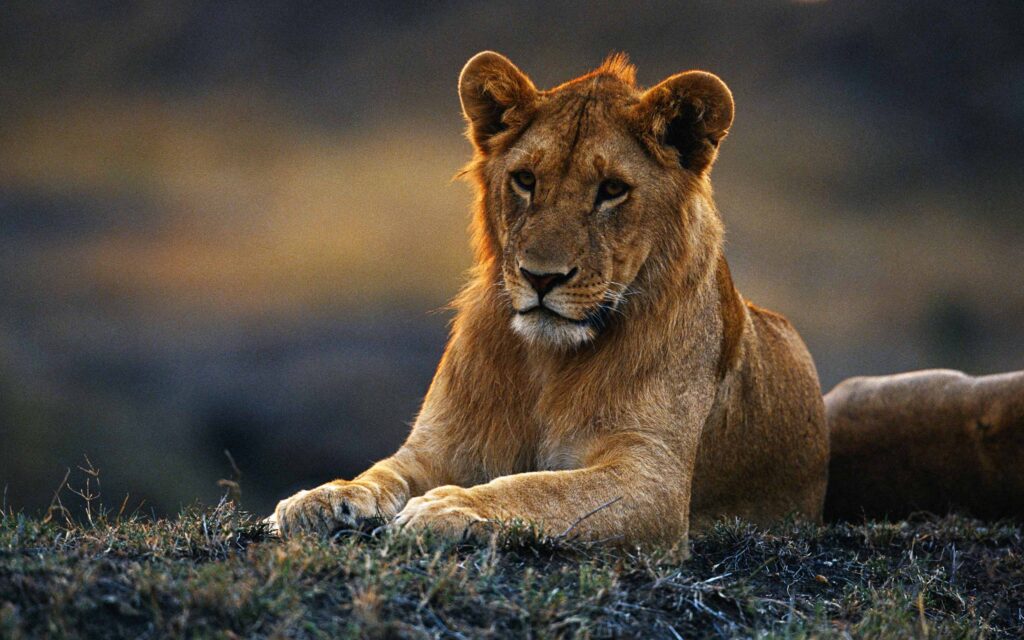
Lion: The Mara’s lions are some of the most photogenic in Africa. Often seen perched on termite mounds or resting in the shade, these lions are accustomed to the presence of safari vehicles, allowing for spectacular photography opportunities. Lions are abundant across the Mara, with the Musiara Marsh and the Mara Triangle being prime areas for spotting large prides.
Leopard: The Mara’s lush riverbanks and dense thickets provide the perfect habitat for leopards. Guides in this region are highly skilled at tracking these elusive cats, so with a bit of patience, you may be rewarded with a glimpse of a leopard lounging in a tree. Leopards can be seen along the Talek and Mara rivers, where they stalk prey in the thick underbrush.
Elephant: The rolling plains of the Mara are home to numerous elephant herds. These gentle giants are often seen feeding on the grasslands, and encounters here tend to be up close and personal. Elephants roam the plains, but the Mara River offers great viewing opportunities, especially in the early morning.
Buffalo: The Mara’s buffaloes are often seen grazing in the open savannas or cooling off in muddy waterholes. They are a common sight, and their sheer numbers can be staggering. African Buffaloes are common throughout the reserve, particularly in the Mara Triangle.
Rhinoceros: While rhino sightings are less frequent in the Mara, the Ol Pejeta Conservancy nearby offers a sanctuary for black rhinos, making it a worthwhile stop for those keen to see all members of the Big Five.
Best Time to Visit
The Great Migration (July to October) is the peak season, but the Big Five can be seen year-round. January to March is quieter and excellent for predator sightings.
Okavango Delta, Botswana: The Untamed Wilderness of the Big Five
The Okavango Delta is one of the most unique safari destinations in Africa. This vast, waterlogged wilderness is a haven for wildlife, offering a different kind of safari experience—one where the Big Five can be encountered on foot, by boat, or in traditional 4×4 vehicles.
About Okavango Delta: The Okavango Delta is a UNESCO World Heritage Site and one of the Seven Natural Wonders of Africa. This unique inland delta, which floods seasonally, transforms the Kalahari Desert into a lush, green paradise teeming with wildlife. The delta’s waterways, islands, and lagoons create a mosaic of habitats that support a high density of predators and prey, making it one of the best places in the world for a Big Five safari. The Okavango is also known for its mokoro (dugout canoe) safaris, which offer a peaceful way to explore the delta’s intricate channels and get up close to the wildlife. This pristine wilderness is also home to traditional communities, like the Bayei and Hambukushu, who have lived in harmony with the environment for centuries, providing an additional cultural dimension to your safari experience.
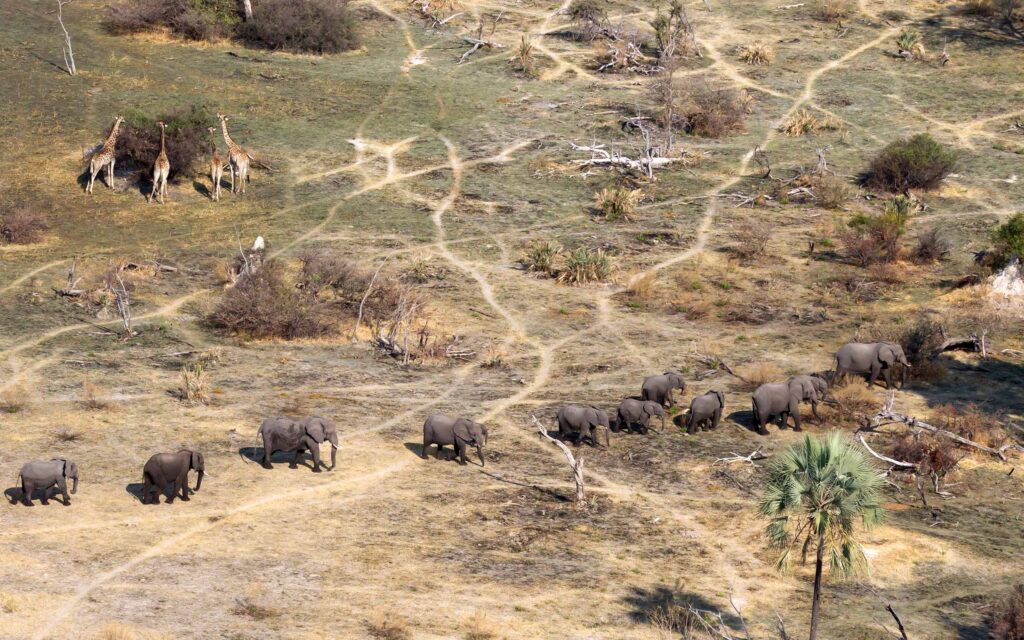
Lion: Lions in the Okavango Delta are true wilderness warriors. They have adapted to the watery landscape, often swimming between islands in pursuit of prey. The pride dynamics here are fascinating, with some lions even taking down formidable prey like buffalo and hippos. African Lions are often seen in the Moremi Game Reserve, where they adapt to the watery environment, often hunting in marshy areas.
Leopard: The Delta’s thick vegetation provides excellent cover for leopards, making them more challenging to spot. However, with the help of expert guides, you can often find them draped over tree branches or stealthily stalking prey along the water’s edge. African Leopards can be spotted in the thick vegetation of the Delta’s islands, particularly in the Chief’s Island region.
Elephant: The Okavango is an elephant paradise. Large herds move through the delta’s waterways, and the sight of elephants wading through the channels, with only their trunks visible above the water, is an unforgettable experience. African Elephants are common throughout the Delta, with large herds often seen crossing the waterways in the early morning and late afternoon.
Buffalo: Buffaloes are often found grazing on the lush islands of the Delta, and their movements are closely watched by the resident lion prides. The interplay between predator and prey is a constant source of drama in this untamed wilderness. African Buffaloes graze in the lush plains and are frequently seen in the Kwedi and Vumbura concessions.
Rhinoceros: Rhino conservation efforts in Botswana have been remarkably successful, and while sightings are still rare, the Okavango Delta is becoming a sanctuary for both black and white rhinos. A sighting here is a testament to the power of conservation and the resilience of nature. Rhinos are rare but can be found in the Moremi Game Reserve, where successful conservation efforts have increased their numbers.
Best Time to Visit
The dry season (May to October) is the best time to visit as the floodwaters attract animals to the Delta, and the weather is cooler.
Etosha National Park, Namibia: A Big Five Safari in a Desert Oasis
Etosha National Park offers a unique safari experience in the arid landscapes of Namibia. The park’s vast salt pans and waterholes attract a wide array of wildlife, including the Big Five, making it a must-visit destination for those seeking something different.
About Etosha National Park: Etosha National Park is one of the largest and most important wildlife reserves in Southern Africa, covering over 22,000 square kilometers. The park’s name, meaning “Great White Place,” refers to the massive salt pan that dominates the landscape. This stark, otherworldly environment is punctuated by natural and man-made waterholes, which become crucial lifelines for wildlife during the dry season. Etosha is unique in that it offers self-drive safaris, giving you the flexibility to explore the park at your own pace. The park is also known for its well-maintained rest camps, where you can relax and watch animals gather at nearby waterholes. With its dramatic scenery, abundant wildlife, and excellent infrastructure, Etosha provides a safari experience unlike any other in Africa.
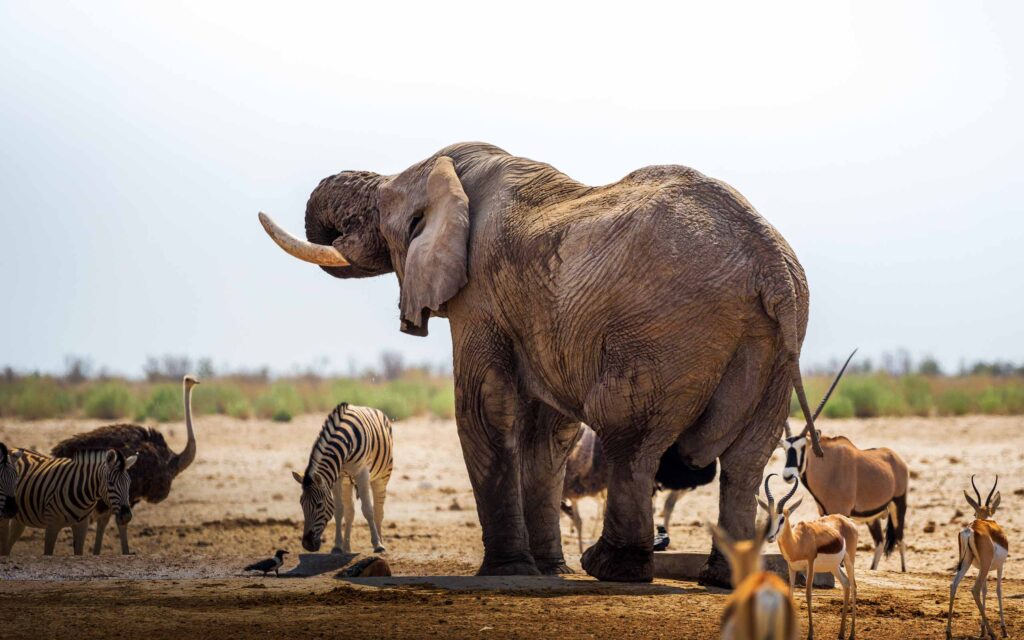
Lion: Etosha’s lions are often seen around the park’s waterholes, especially during the dry season when prey is concentrated around these vital resources. The contrast of a lion’s golden coat against the stark white of the salt pan makes for stunning photographic opportunities. African Lions are often seen around the Okaukuejo and Halali waterholes, where they wait for prey to come to drink.
Leopard: Leopards in Etosha are elusive, but the park’s sparse vegetation can make them easier to spot than in more densely wooded areas. Keep an eye on the trees around waterholes, where leopards may be lying in wait for unsuspecting prey. African Leopards can be spotted in the early mornings or late afternoons around the waterholes near Halali and Namutoni camps.
Elephant: Etosha is home to some of the largest elephants in Africa, often referred to as “desert elephants” due to their adaptation to the arid environment. Watching a herd of these giants emerge from the dusty landscape to drink at a waterhole is a powerful reminder of nature’s resilience. African Elephants frequently visit the waterholes near the Namutoni and Okaukuejo camps, often in the late afternoon.
Buffalo: Although buffalo sightings are less common in Etosha, the park is home to a small population that can often be seen near the park’s permanent water sources. Their presence adds to the diverse tapestry of wildlife that makes Etosha so special. African Buffaloes are rarer in Etosha but are sometimes seen in the western parts of the park, particularly near the Otjovasandu area.
Rhinoceros: Etosha is one of the best places in Africa to see black rhinos, especially around the park’s floodlit waterholes at night. The sight of a rhino silhouetted against the night sky, illuminated by the soft glow of the waterhole lights, is a magical moment that will stay with you forever. Rhinos are best seen at night around the Okaukuejo waterhole, where floodlights allow for nocturnal viewing.
Best Time to Visit
The dry season (May to September) is the best time for wildlife viewing as animals gather around the park’s waterholes.
Other Places to Find the Big Five in Africa
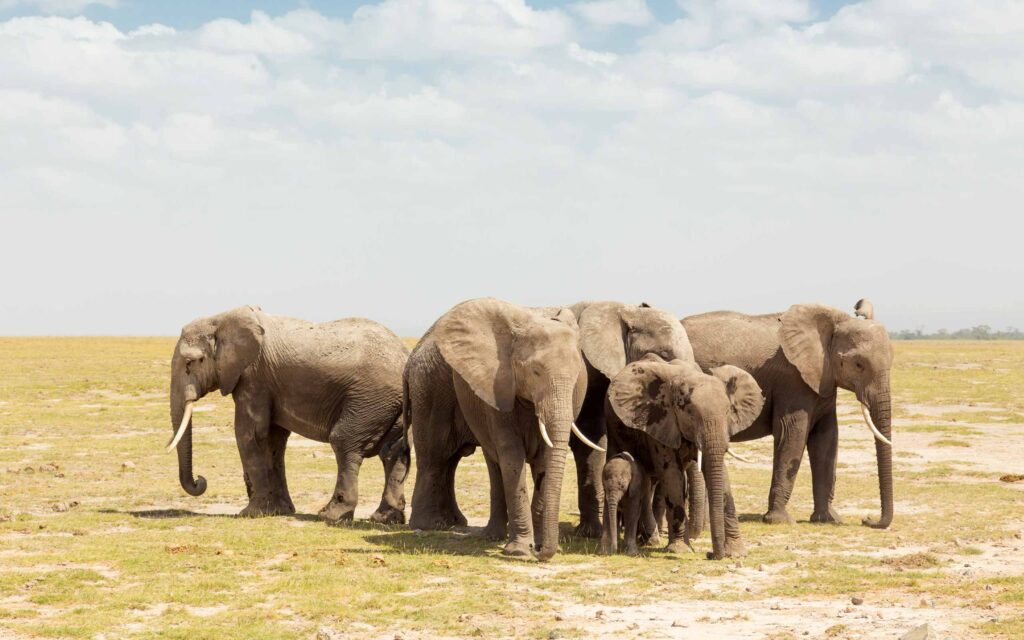
While the Serengeti, Kruger, Masai Mara, Okavango Delta, and Etosha are among the most renowned locations for spotting the Big Five, Africa offers several other incredible destinations where these majestic animals can also be found. If you’re looking to explore beyond the usual hotspots, consider these equally captivating safari destinations:
- Hluhluwe-iMfolozi Park, South Africa: Located in KwaZulu-Natal, this is one of Africa’s oldest game reserves and played a crucial role in saving the white rhinoceros from extinction. The park’s rolling hills and dense bushveld provide a unique backdrop for Big Five sightings, particularly rhinos, which are a highlight here.
- Chobe National Park, Botswana: Known as the “Land of Giants,” Chobe is famous for its large elephant herds. The park’s diverse ecosystems also support healthy populations of lions, leopards, buffaloes, and the increasingly rare black rhino. A boat cruise on the Chobe River offers a unique vantage point for wildlife viewing.
- Ngorongoro Crater, Tanzania: This UNESCO World Heritage Site is often referred to as the “Eighth Wonder of the World.” The crater’s natural enclosure creates a microcosm of East African wildlife, making it one of the most reliable places to see the Big Five in a single day. The crater floor is particularly noted for its dense populations of lions and black rhinos.
- South Luangwa National Park, Zambia: Known for its walking safaris, South Luangwa offers an intimate way to experience the African bush. The park is a stronghold for leopards, and its diverse landscapes make it an excellent spot for seeing elephants, buffaloes, and lions. Black rhinos have been reintroduced here, adding to the park’s Big Five appeal.
- Addo Elephant National Park, South Africa: Initially established to protect a small number of elephants, Addo has grown into a haven for the Big Five. It is especially renowned for its elephant herds, but visitors can also spot lions, leopards, buffaloes, and the rare black rhino. The park’s coastal extension offers the unique opportunity to see the “Big Seven,” including great white sharks and southern right whales.
- Mana Pools National Park, Zimbabwe: This UNESCO World Heritage Site is famed for its scenic beauty and thriving populations of the Big Five. Mana Pools offers unique opportunities for close encounters with elephants and buffaloes, particularly along the Zambezi River. The park is also known for its adventurous walking safaris, where visitors can track lions and leopards on foot.
- Queen Elizabeth National Park, Uganda: This park is not only home to the Big Five but also famous for its tree-climbing lions in the Ishasha sector. The park’s varied ecosystems—from savanna to rainforest—support a rich diversity of wildlife, making it a superb safari destination. The chance to spot both the Big Five and the rare shoebill stork adds to its allure.
- Madikwe Game Reserve, South Africa: Located along the Botswana border, Madikwe is one of South Africa’s largest reserves and offers a malaria-free safari experience. The reserve’s varied landscapes support healthy populations of the Big Five, particularly elephants and rhinos. Madikwe’s conservation efforts have also reintroduced African wild dogs, making it a destination for seeing the “Super Seven.”
- Moremi Game Reserve, Botswana: Located within the Okavango Delta, Moremi is one of the best places in Africa to see the Big Five. This reserve is particularly known for its high densities of predators, including lions and leopards. The combination of water and land-based safari experiences makes Moremi a diverse and exciting destination.
- Kidepo Valley National Park, Uganda: Often described as Africa’s best-kept secret, Kidepo Valley offers an off-the-beaten-path safari experience. The park’s remote location in northeastern Uganda means it’s less crowded, but it still offers excellent opportunities to see the Big Five. The park is also home to unique species like the cheetah and ostrich, adding to its allure.
Your Big Five Adventure with Visit Africa
There’s no adventure quite like a Big Five safari. It’s an opportunity to connect with Africa’s wild heart, to witness the majesty of its iconic animals, and to experience the thrill of the chase in some of the most breathtaking landscapes on earth. Whether it’s the vast plains of the Serengeti, the waterways of the Okavango, or the desert oases of Namibia, each destination offers a unique perspective on the Big Five experience.
So, what are you waiting for? Africa’s most iconic wildlife is calling. Let Visit Africa guide you on a journey into the wild, where every roar, every rustle in the bush, and every breathtaking sight will remind you why Africa is a place like no other. Your Big Five adventure awaits—are you ready to answer the call?













